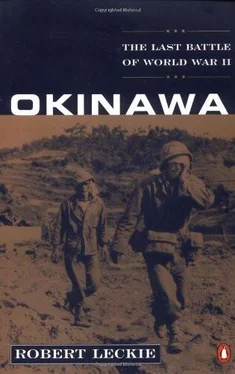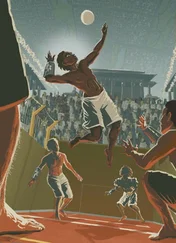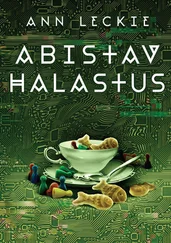Shirigaku
shoguns
Shuri
Shuri Castle
Shuri Heights
Shuri Ridge
Singapore
Skyline Ridge
slow assault tactics
Smith, Aubrey
Smith, Howland M. “Howlin’ Mad”
Smith, Ralph
Soballe, Victor
Solch, Joseph
Solomon Islands
Soviet Union
Spruance, Raymond
Stalin, Joseph
Stare, Edward
Sterner, Cyril
Stormes
Strawberry Hill
Sturgeon
Sugahara, Michio
Sugar Loaf Hill
suicide bombers, see kamikaze
Sumatra
Superfortresses (B-29 bombers)
supplies
Suribachi, Mount
Sutten, Stanley
Suzuki, Kantaro
Swallow
Taiwan (Formosa)
Takeda, Fujio
Taluga
Tanabaru
Tarawa
Task Force Fifty-eight (TF 58), I n
Franklin
Task Force Thirty-eight (TF 38), In
Taylor, Joe
Ten-Go (Heavenly Operation)
Tennessee
Thailand
Thought Police
Tojo, Hideki
Tokyo
Tokyo Plain
Tombstone Ridge
Tooker, Adin
Toyama Maru
Toyoda, Soemu
Truman, Harry S.
Turner, Richmond Kelly
Udo, Kensuke
Udo, Takehiko
Ugaki, Matome
Uhlmann
“Umi Yukaba,”
Urasoe-Mura Escarpment
Ushijima, Mitsuru
American victory and
character of
Conical Hill and
exaggerated battle reports of
farewell dinner of
last stand of
Ushijima, Mitsuru ( cont. )
and material vs. spiritual power
Minatoga Beaches and
Naha-Shuri-Yonabaru Line and
at Shuri Castle
suicide of
surrender appeal made to
U.S. Strategic Bombing Survey
Vandegrift, Alexander
Van Schuyler, Philip
Vincennes
Vogt, John
Wada, Kosuke
Wake
Wallace, Clarence
Wana Draw
Wana Ridge
Wart Hill
Washington Star
Wasp
Watson, Thomas
Westmoreland, William
World War I
Wray, George
Xavier, Francis
Yaeju-Yuza Peaks
Yaetake, Mount
Yahagi
Yahara, Hiromichi
Yamamoto, Isoroku
Yamato
Yamato clan
Yokoi, Toshiyuki
Yonabaru
Yonabaru Airfield
Yontan Airfield
Yoshida, Masaru
Yoshida, Mitsuru
zaibatsu
Zampa Cape
Robert Leckie was the author of more than thirty books, most of them on military history, which include Helmet for My Pillow, a personal narrative of World War II. He joined the U.S. Marine Corps the day after the attack on Pearl Harbor and served nearly three years in the Pacific as a machine gunner and scout of the First Marine Division, and was wounded and decorated.
PENGUIN BOOKS
Published by the Penguin Group
Penguin Group (USA) Inc., 375 Hudson Street, New York, New York 10014, U.S.A.
Penguin Group (Canada), 90 Eglinton Avenue East, Suite 700, Toronto, Ontario, Canada M4P 2Y3 (a division of Pearson Penguin Canada Inc.)
Penguin Books Ltd, 80 Strand, London WC2R 0RL, England
Penguin Ireland, 25 St Stephen’s Green, Dublin 2, Ireland (a division of Penguin Books Ltd)
Penguin Group (Australia), 250 Camberwell Road, Camberwell, Victoria 3124, Australia (a division of Pearson Australia Group Pty Ltd)
Penguin Books India Pvt Ltd, 11 Community Centre, Panchsheel Park, New Delhi - 110 017, India
Penguin Group (NZ), 67 Apollo Drive, Rosedale, North Shore 0632, New Zealand (a division of Pearson New Zealand Ltd)
Penguin Books (South Africa) (Pty) Ltd, 24 Sturdee Avenue, Rosebank, Johannesburg 2196, South Africa
Penguin Books Ltd, Registered Offices: 80 Strand, London WC2R 0RL, England
First published in the United States of America by Viking Penguin,
a member of Penguin Group (USA) Inc. 1995
Published in Penguin Books 1996, 2010
Copyright © Robert Leckie, 1995 All rights reserved
All photograph: AP/Wide World Photos
eISBN : 978-1-10119629-8
1. World War, 1939-1945—Campaigns—Japan—Okinawa Island.
2. Okinawa Island (Japan)—History. I. Title.
D767.99.O45L43 1995
940.54’25—dc20 94-39145
The scanning, uploading and distribution of this book via the Internet or via any other means without the permission of the publisher is illegal and punishable by law. Please purchase only authorized electronic editions, and do not participate in or encourage electronic piracy of copyrighted materials. Your support of the author’s rights is appreciated.
http://us.penguingroup.com
When Spruance commanded this enormous concentration of naval striking power, it was called “Task Force Fifty-eight”; when Bull Halsey’s flag was flown it was “Task Force Thirty-eight.”
Because there is no hard-and-fast rule for translating Japanese geographical terms— shoto , meaning various islands or group of islands; gunto or retto, a group of islands; shima or jima, an island; or ie, an islet—this narrative will use the general English words for the same.
Japanese warplanes were divided into feminine names for bombers and masculine ones for fighters.
This means “regiment,” not division. In American military parlance a regiment formed by three battalions is known by its “arm.” Thus the First Regiment of the First Marine Division is called “First Marines,” or the Seventh Regiment of the First Cavalry Division “Seventh Cavalry.” Too often historians with no military experience mistake these designations to mean division, a much larger formation that—whether infantry, cavalry, or Marine—is usually formed by three “line” regiments and an artillery regiment with other special troops.
This comment in no way is intended to demean these gallant GIs—or anyone who has looked upon the horrid Medusa face of battle—but appears only because it might be asked why other nicknames are mentioned but not the Ninety-sixth’s.
This incident, reported by George McMillan in The Old Breed, his history of the First Marine Division in World War II, does not ring true. Marines are trained to keep their weapons on safety lock even during an invasion, and not to unlock them until a firefight is about to erupt or until receipt of enemy fire. “Let one go” is also untypical. “Got his gun off” is the proper slang. I can remember a corporal I learned to despise from Guadalcanal onward running toward the beach at Peleliu with terror on his face and holding his right hand aloft with the trigger finger missing and spouting carmine. My only comfort watching him sprint for the safety of the Battalion Aid Station on the beach was that his missing member would always remind him of his cowardice. So I doubt this episode—from the pen of a headquarters sergeant—and mention it only to show how absolutely unopposed the Okinawa invasion actually was at its beginning.
Here is perhaps the most moving of all the phenomena of the war: the self-sacrifice of noble and brave young American fighting men who smothered enemy grenades with their bodies to save their buddies. Yet, discussing this once with a group of teachers, I had just begun to quote Jesus Christ’s dictum “Greater love than this no man hath, that a man lay down his life for his friends,” when one of them angrily interrupted me. “Nonsense!” he cried in scorn. “Who would do such a crazy thing?” Glaring at me, he asked with heavy sarcasm, “Would you?” I replied, “I might. But never to save someone like you.”
Читать дальше










